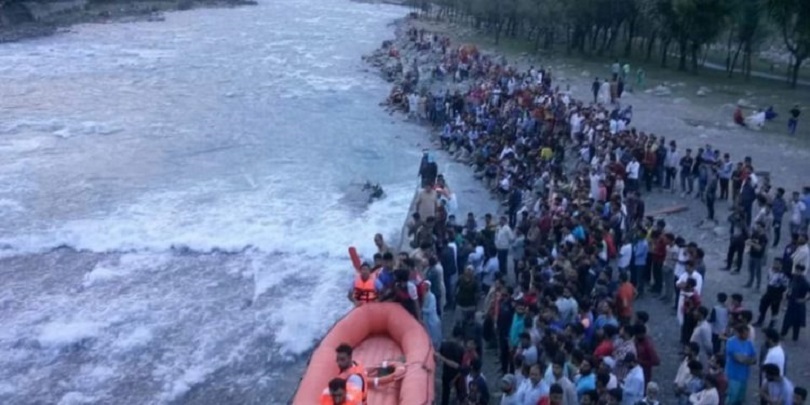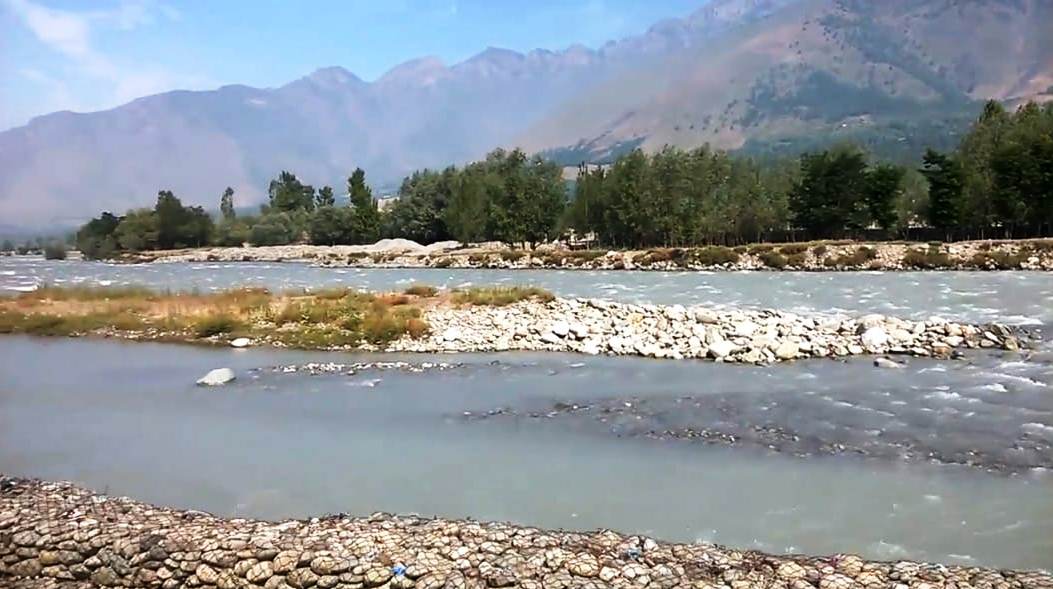
Beyond one celebrated savior’s routine rescue operations, Sindh in Central Kashmir’s Ganderbal district is dominating the news for intermittent drowning cases in its roaring waters.
By Sayima Dar
INSIDE a Kashmir-Kargil Highway teashop packed with local talkers and non-local travellers, lecturer Nazir Mir, 38, is avoiding discussion on the “changing course” of Sindh, the roaring canal flowing through his hometown.
With its fountainhead lying in the Machoi Glacier, the 108-kilometer-long Sindh canal flows through Ganderbal and joins river Jhelum at Shadipora, 17 kilometres northwest of Srinagar.
Amid the distressed wave of suicides in the valley, the canal has witnessed many drowning cases and rescue bids in its roaring waters this summer.
The talkers inside the teashop are expressing anguish over the “fatal consequences”, making Mir melancholic over “unchecked slips” into Sindh.
“The meditative calm of this place is being shattered by these repeated drowning incidents,” Mir, sipping his third teacup, says. “This has to stop for good.”
Mir refers to the recent incident wherein three boys were caught in the furious waves of the swelled Sindh. The timely dive of one daredevil did save the situation but once again raised the safety concerns.
“Such incidents are unlikely to stop,” Mir continues. “But that doesn’t mean the government should stay quiet about it. If a treacherous Maharaja before 1947 would depute water police to check any violation or mishap in rivers, why can’t present day administration post water guards in Sindh to avert these incidents?”
This demand is now gaining traction in Ganderbal as locals believe such unchecked incidents are likely to give a bad name to the captivating canal in the long run.

On June 23, 2021, Mohammad Salim Khan of Srinagar drowned in Sindh. The teenager drowned in the Kangan area, where such incidents aren’t uncommon—especially in the canal tied with the Upper Sindh Hydroelectric Project (USHP), one of three government projects set up on Sindh in 2001.
“This power canal has devoured many lives due to its immense depth,” says Abdul Samad, a Kangan resident. “It originates from Sumbal USHP-I, and passes through Kulan areas but the drowning prone area is USHP-II.”
Since 2018, the canal has devoured five teenagers—between the age of 14 and 19.
In August 2018, Nadeem Mir, 14, drowned while bathing in the canal at Kijpora. Next year, in April, Tariq Awah, 16, drowned at Gund, while Zahid Umar and Faisal Ahmad—aged 17 and 18—drowned at Kijpora in July 2020.
This summer, Salim Khan, 19, lost his life in the same canal at the Rayil area of Kangan.

In the Kangan marketplace, Abdul Karim has been rushing towards the canal whenever din over drowning disturbs the mood of the town.
“Local drivers often cooperate with the State Disaster Response Force, Police and CRPF in rescue operations,” Karim, who runs a fruit-cart in the main market, says.
“But despite such reactionary responses, proactive preventive measures remain missing.”
Since the banks are bereft of guards, picnickers in a bid to take Selfies slip into the canal.
Recently, when three boys from Srinagar drowned in this canal, authorities banned swimming in or taking Selfies there.
At the teashop, Nazir Mir says people don’t follow those instructions.
“These slips won’t stop unless there’s proper fencing,” he says. “This water body makes rescue operations very tough due to its frozen and in-depth water. People pleaded with authorities for fencing and lighting along the river banks. But it seems guarding these slippery bunds has become some herculean task.”
Follow this link to join our WhatsApp group: Join Now
Be Part of Quality Journalism |
Quality journalism takes a lot of time, money and hard work to produce and despite all the hardships we still do it. Our reporters and editors are working overtime in Kashmir and beyond to cover what you care about, break big stories, and expose injustices that can change lives. Today more people are reading Kashmir Observer than ever, but only a handful are paying while advertising revenues are falling fast. |
| ACT NOW |
| MONTHLY | Rs 100 | |
| YEARLY | Rs 1000 | |
| LIFETIME | Rs 10000 | |










